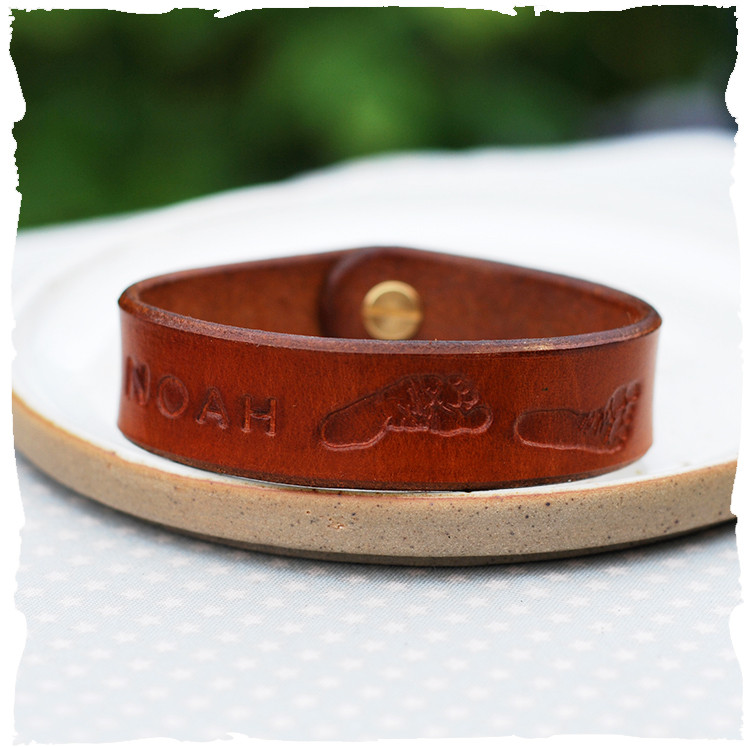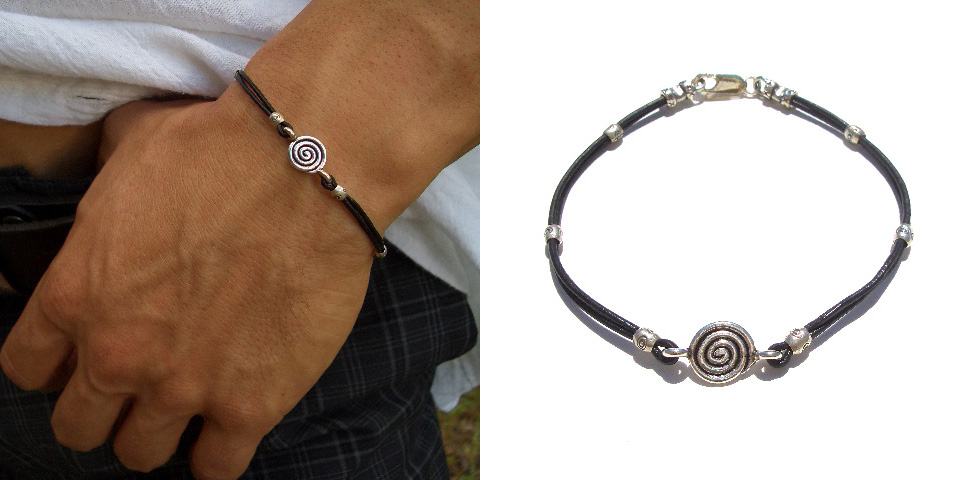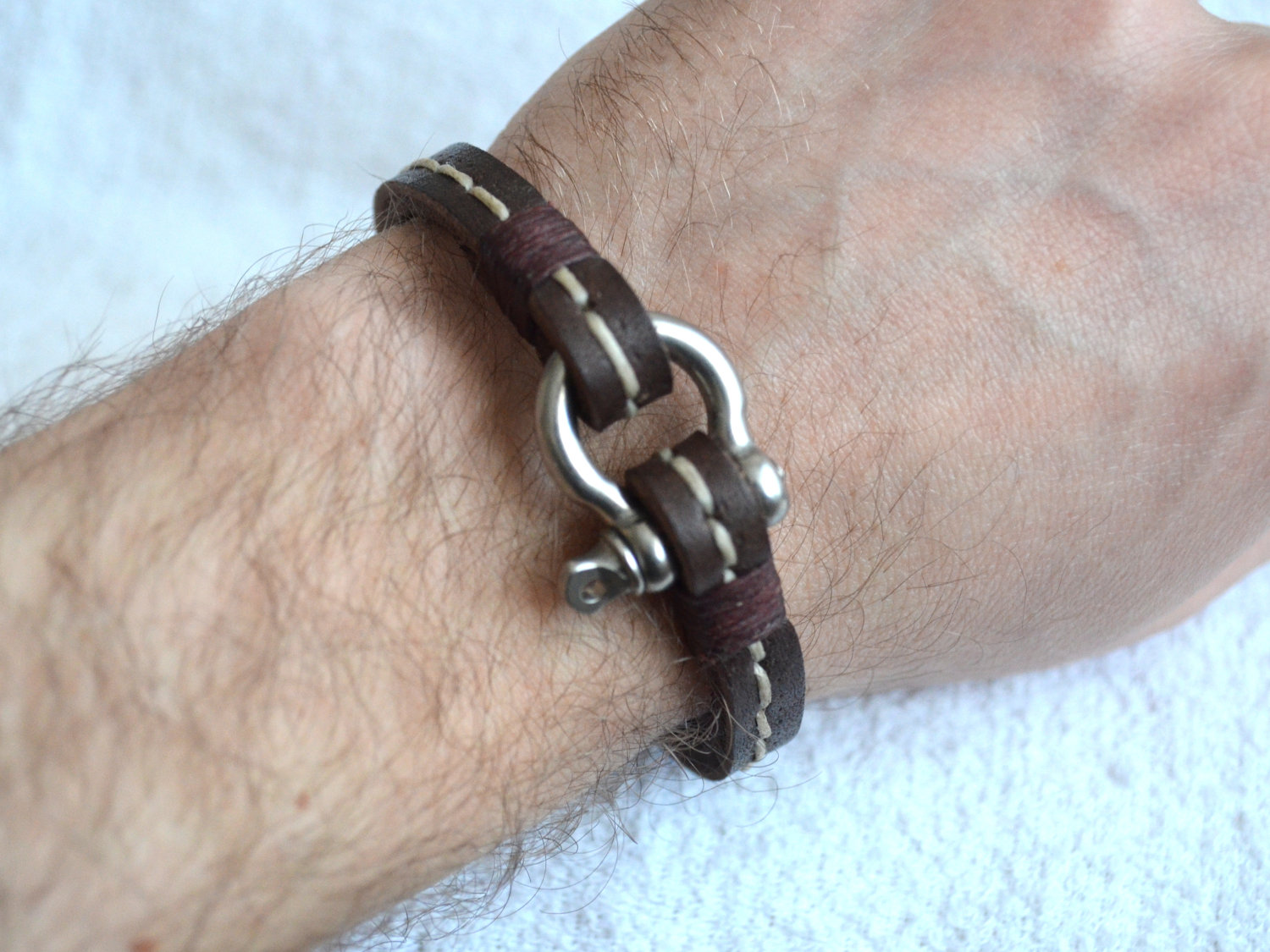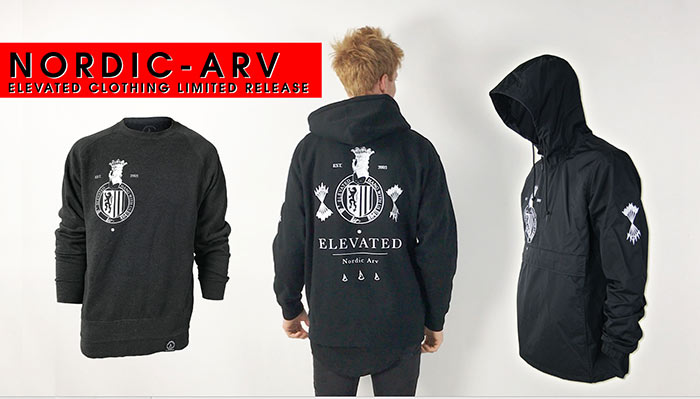A Peak in the Popularity of Mens Jewelry
26
Aug
A Peak in the Popularity of Mens Jewelry
Mens jewelry has dipped and soared in popularity since the very beginning of fashion times. These days, the majority of men do wear jewelry. From watches and cufflinks to diamond stud earrings and necklaces, the majority of men wear something. However this has not always been the case.
Going back to the 1930s, a lot of mens jewelry was just not available. Earrings, for example, which are not hugely popular amongst the male fashion community but are still worn by a good number of men, were unheard of. At best, you could read about legendary pirates in novels such as Long John Silver wearing them, but certainly no one living and certainly not unless one was a pirate.
Native people and aboriginals from ancient history, both men and women, have been wearing jewelry from around 3000 BC. Even in the Old Testament, mens jewelry was mentioned. Mens earrings have always been an item that has evoked strong opinions throughout history and have been uncertain of their place in society for many years. For example, in Egypt, gold earrings were the favourite choice whereas the ancient Greeks preferred coloured gemstones to glam up their ears.
Throughout these times, mens earrings have been symbols of status, age and wealth. In more primitive cultures, earrings were believed to help to keep evil spirits away and to help with ailments (gold earrings for headaches and also to strengthen weak eyes). Jumping on several hundred centuries, during the time of Queen Elizabeth I, earrings for men were very popular. However, this only lasted until around 1920s and then men with pierced ears zonked out of fashion for 30 years. However, in the 1960s, male earrings made a small comeback but were seen as a sign of homosexuality and due to the fact that homophobia was still rampant in those days, it was not a very popular accessory to have.
 Source: http://holduponheart.co.uk/collections/fingerprint-handprint-cufflinks/products/footprint-leather-bracelet
However, at the moment, we seem to be in the midst of a high point of male jewelry. Once the domain of rockstars, mens jewelry has become an increasingly dynamic and valuable market. Most modern men seem fairly comfortable with the idea of wearing jewelry other than their watch and wedding ring. Some people wear it on a daily basis whereas others only decorate themselves for more special occasions.
As metrosexuality has become more popular and experimenting with different fashions and make-overs is becoming more accepted, jewelry has been seen as an important fashion statement and can help to endorse men in their quest for identity and elite personalities. Rather than the boring, buttoned-up, Wall Street power dressing that came about in the 1970s, what we see today is mens newly found passion for wearing jewelry again as a means of personal expression.
Source: http://holduponheart.co.uk/collections/fingerprint-handprint-cufflinks/products/footprint-leather-bracelet
However, at the moment, we seem to be in the midst of a high point of male jewelry. Once the domain of rockstars, mens jewelry has become an increasingly dynamic and valuable market. Most modern men seem fairly comfortable with the idea of wearing jewelry other than their watch and wedding ring. Some people wear it on a daily basis whereas others only decorate themselves for more special occasions.
As metrosexuality has become more popular and experimenting with different fashions and make-overs is becoming more accepted, jewelry has been seen as an important fashion statement and can help to endorse men in their quest for identity and elite personalities. Rather than the boring, buttoned-up, Wall Street power dressing that came about in the 1970s, what we see today is mens newly found passion for wearing jewelry again as a means of personal expression.
 In London, in the 12 months ending May 2014, the sales for mens accessories grew by 9% and as a result of this rise in demand and popularity, the industrys biggest brands such as Saint Laurent, Versace and Givenchy have jumped on the craze and are creating high-end male jewelry. These big brands have realized they need to sell accessories and jewelry alongside their male clothing to attract buyers.
In London, in the 12 months ending May 2014, the sales for mens accessories grew by 9% and as a result of this rise in demand and popularity, the industrys biggest brands such as Saint Laurent, Versace and Givenchy have jumped on the craze and are creating high-end male jewelry. These big brands have realized they need to sell accessories and jewelry alongside their male clothing to attract buyers.
 Of course, it is not only the high-end high fashion shops that are selling the new trend. All high street shops now have a male jewelry section similar to the womens (but much smaller.) Independent labels are also seizing the opportunity. There has been a double-digit year-on-year increase in our men's store accessories since 2002, but this growth has particularly accelerated over the past three years in online shops such as notonthehighstreet.com, Asos and holduponheart.co.uk.
It is hard to deny that this peak in popularity is a result of shifting social attitudes. As a society, we are slowly but surely becoming more liberal and more accepting of metrosexuality and difference. Looking back 15 or 20 years, it was only rock stars and other musicians who covered themselves in heavy chains and big rings but as times have moved on, in the mid-1990s, we saw the start of the rise of celebrity culture, with influencers such as David Beckham having a notable impact on the way men dress. Beckham is a huge promoter for accessorizing and this (along with other male-jewelry-fan-celebrities) has filtered through to consumers.
Of course, it is not only the high-end high fashion shops that are selling the new trend. All high street shops now have a male jewelry section similar to the womens (but much smaller.) Independent labels are also seizing the opportunity. There has been a double-digit year-on-year increase in our men's store accessories since 2002, but this growth has particularly accelerated over the past three years in online shops such as notonthehighstreet.com, Asos and holduponheart.co.uk.
It is hard to deny that this peak in popularity is a result of shifting social attitudes. As a society, we are slowly but surely becoming more liberal and more accepting of metrosexuality and difference. Looking back 15 or 20 years, it was only rock stars and other musicians who covered themselves in heavy chains and big rings but as times have moved on, in the mid-1990s, we saw the start of the rise of celebrity culture, with influencers such as David Beckham having a notable impact on the way men dress. Beckham is a huge promoter for accessorizing and this (along with other male-jewelry-fan-celebrities) has filtered through to consumers.
 Although the mens jewelry market is growing, it will never match the demand for womens jewelry. It is interesting to think about why and it almost turns sexual politics on its head when you really think about why men are so much fussier than women when selecting their jewelry. Men need persuasion and coaxing to convince them its safe. Women are much easier and free when choosing their jewelry, probably because they are used to moulding and remoulding themselves into different contexts - men are not so fluid.
Although the mens jewelry market is growing, it will never match the demand for womens jewelry. It is interesting to think about why and it almost turns sexual politics on its head when you really think about why men are so much fussier than women when selecting their jewelry. Men need persuasion and coaxing to convince them its safe. Women are much easier and free when choosing their jewelry, probably because they are used to moulding and remoulding themselves into different contexts - men are not so fluid.
 Source: http://holduponheart.co.uk/collections/fingerprint-handprint-cufflinks/products/footprint-leather-bracelet
However, at the moment, we seem to be in the midst of a high point of male jewelry. Once the domain of rockstars, mens jewelry has become an increasingly dynamic and valuable market. Most modern men seem fairly comfortable with the idea of wearing jewelry other than their watch and wedding ring. Some people wear it on a daily basis whereas others only decorate themselves for more special occasions.
As metrosexuality has become more popular and experimenting with different fashions and make-overs is becoming more accepted, jewelry has been seen as an important fashion statement and can help to endorse men in their quest for identity and elite personalities. Rather than the boring, buttoned-up, Wall Street power dressing that came about in the 1970s, what we see today is mens newly found passion for wearing jewelry again as a means of personal expression.
Source: http://holduponheart.co.uk/collections/fingerprint-handprint-cufflinks/products/footprint-leather-bracelet
However, at the moment, we seem to be in the midst of a high point of male jewelry. Once the domain of rockstars, mens jewelry has become an increasingly dynamic and valuable market. Most modern men seem fairly comfortable with the idea of wearing jewelry other than their watch and wedding ring. Some people wear it on a daily basis whereas others only decorate themselves for more special occasions.
As metrosexuality has become more popular and experimenting with different fashions and make-overs is becoming more accepted, jewelry has been seen as an important fashion statement and can help to endorse men in their quest for identity and elite personalities. Rather than the boring, buttoned-up, Wall Street power dressing that came about in the 1970s, what we see today is mens newly found passion for wearing jewelry again as a means of personal expression.
 In London, in the 12 months ending May 2014, the sales for mens accessories grew by 9% and as a result of this rise in demand and popularity, the industrys biggest brands such as Saint Laurent, Versace and Givenchy have jumped on the craze and are creating high-end male jewelry. These big brands have realized they need to sell accessories and jewelry alongside their male clothing to attract buyers.
In London, in the 12 months ending May 2014, the sales for mens accessories grew by 9% and as a result of this rise in demand and popularity, the industrys biggest brands such as Saint Laurent, Versace and Givenchy have jumped on the craze and are creating high-end male jewelry. These big brands have realized they need to sell accessories and jewelry alongside their male clothing to attract buyers.
 Of course, it is not only the high-end high fashion shops that are selling the new trend. All high street shops now have a male jewelry section similar to the womens (but much smaller.) Independent labels are also seizing the opportunity. There has been a double-digit year-on-year increase in our men's store accessories since 2002, but this growth has particularly accelerated over the past three years in online shops such as notonthehighstreet.com, Asos and holduponheart.co.uk.
It is hard to deny that this peak in popularity is a result of shifting social attitudes. As a society, we are slowly but surely becoming more liberal and more accepting of metrosexuality and difference. Looking back 15 or 20 years, it was only rock stars and other musicians who covered themselves in heavy chains and big rings but as times have moved on, in the mid-1990s, we saw the start of the rise of celebrity culture, with influencers such as David Beckham having a notable impact on the way men dress. Beckham is a huge promoter for accessorizing and this (along with other male-jewelry-fan-celebrities) has filtered through to consumers.
Of course, it is not only the high-end high fashion shops that are selling the new trend. All high street shops now have a male jewelry section similar to the womens (but much smaller.) Independent labels are also seizing the opportunity. There has been a double-digit year-on-year increase in our men's store accessories since 2002, but this growth has particularly accelerated over the past three years in online shops such as notonthehighstreet.com, Asos and holduponheart.co.uk.
It is hard to deny that this peak in popularity is a result of shifting social attitudes. As a society, we are slowly but surely becoming more liberal and more accepting of metrosexuality and difference. Looking back 15 or 20 years, it was only rock stars and other musicians who covered themselves in heavy chains and big rings but as times have moved on, in the mid-1990s, we saw the start of the rise of celebrity culture, with influencers such as David Beckham having a notable impact on the way men dress. Beckham is a huge promoter for accessorizing and this (along with other male-jewelry-fan-celebrities) has filtered through to consumers.
 Although the mens jewelry market is growing, it will never match the demand for womens jewelry. It is interesting to think about why and it almost turns sexual politics on its head when you really think about why men are so much fussier than women when selecting their jewelry. Men need persuasion and coaxing to convince them its safe. Women are much easier and free when choosing their jewelry, probably because they are used to moulding and remoulding themselves into different contexts - men are not so fluid.
Although the mens jewelry market is growing, it will never match the demand for womens jewelry. It is interesting to think about why and it almost turns sexual politics on its head when you really think about why men are so much fussier than women when selecting their jewelry. Men need persuasion and coaxing to convince them its safe. Women are much easier and free when choosing their jewelry, probably because they are used to moulding and remoulding themselves into different contexts - men are not so fluid.



 Add More
Add More 



